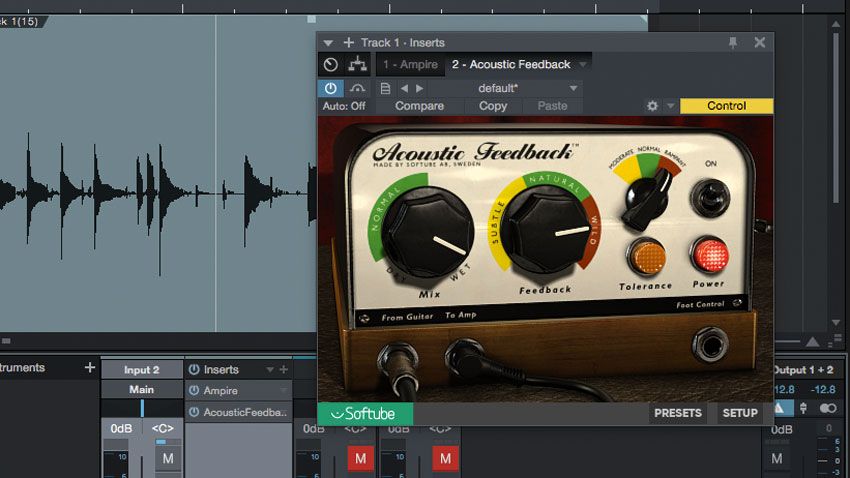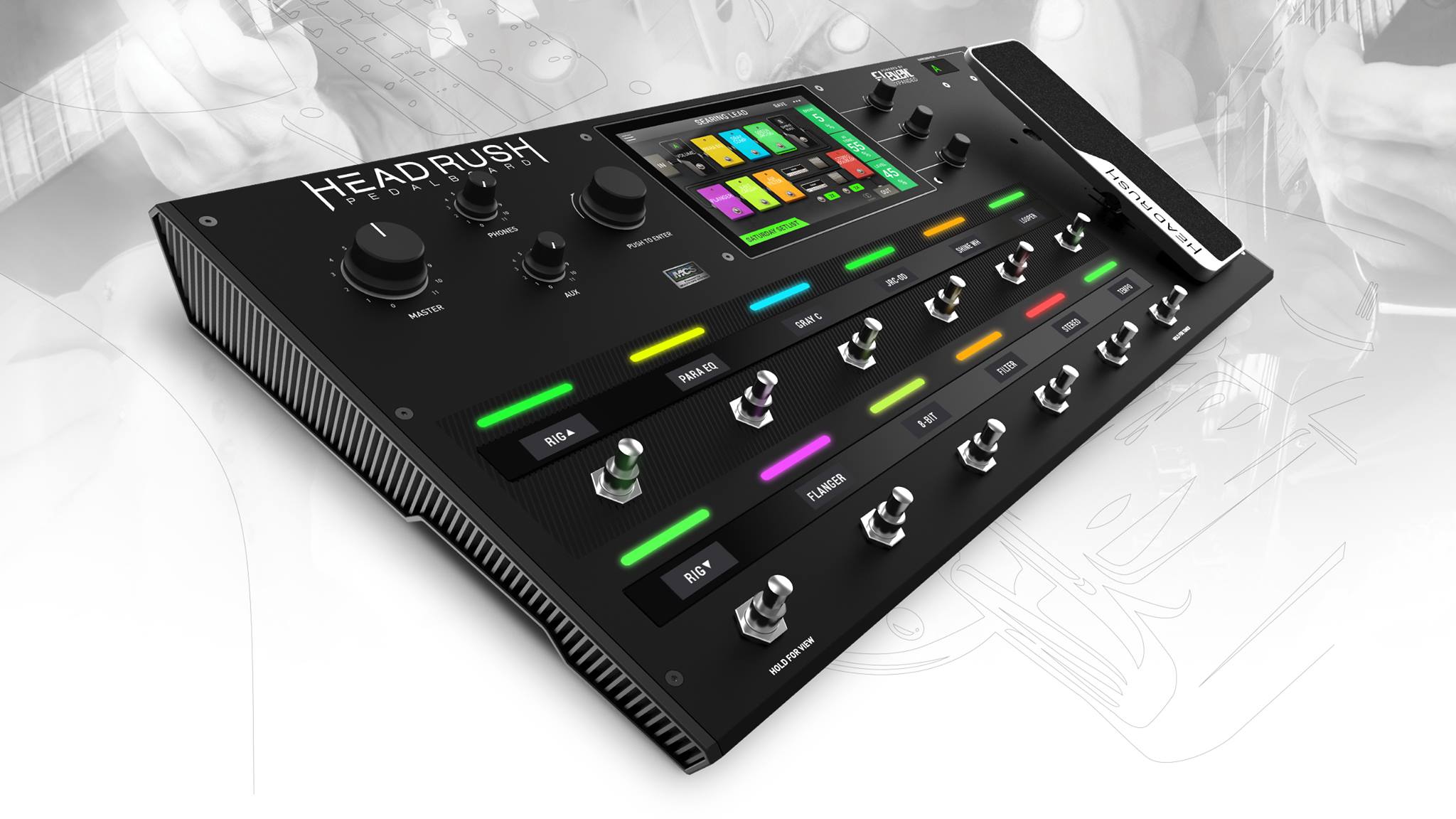VST stands for Virtual Studio Technology. VST is a software interface that facilitates digital synthesizers and effects to be used in a digital recording environment. In this article we will look at some of the best VST plugins for processing electric guitar that you can use in your own productions. GUITAR VSTs: Best Free VST Plugins for Guitar 1) Nick Crow 8505 Lead A formidable VST amp for heavy metal fanboys and shred aficionados, Nick Crow 8505 lead has been in the game for a while now. It comes in handy for adding that powerful and jaw-dropping raw punch to your guitar tone and makes it sound more intense and 'heavy'.
Are you an electric guitar player looking for the lush, warm, and woody sound of an acoustic guitar? But you only have electric guitars in your collection?
This post is the beginner's guide to transform your electric guitar to the sound of an acoustic guitar with some helpful tips along the way.
Metal Guitar Vst Plugins Free
The best way to make an electric guitar sound like an acoustic is to use an ‘acoustic simulator' effect either with a stompbox pedal, digital effect unit, or VST plugin. The effect simulates the resonance and tone of an acoustic guitar so your electric guitar can sound like an acoustic.
What Does an Acoustic Simulator Effect Do?
An acoustic simulator either a pedal or a modeling patch from a digital effect unit is essentially an effect that converts your electric guitar signal to simulate the woody sound of an acoustic guitar.
Typically the effect works best when engaged and combined with a clean guitar tone.
This means no distortion or gain in the signal for the most accurate acoustic tone while using your electric guitar. Remember keep it clean!
Why Use an Acoustic Simulator Pedal Effect
- You don't have to buy an expensive acoustic to get a good acoustic tone
- You can cut down on the number of guitars needed for live gigs.
- Use any of your electric guitars (some provide better acoustic tones than others)
- Makes recording easier
- Cut down on additional recording gear
- Recording a physical acoustic can be cumbersome and time-consuming
- Recording an acoustic requires a recording worthy environment with good room acoustics
Acoustic Simulator Effect vs Real Acoustic Guitar
Many acoustic simulator effects from various pedals are great at producing an acoustic sound while conveniently playing your electric.
However keep in mind, the tone will not exactly sound as accurate and authentic as hearing a professionally recorded Taylor or Gibson acoustic guitar. Which is to be expected of course!
Weird fx vst free. You would think this would be obvious to the creators, but it isn't.Judging by the website, the people at Native Instruments didn't have any idea of who they were talking to, because I've been playing guitar for nearly 20 years and still can't make heads or tails of their copy.But if I'm understanding correctly, this free plugin gives you access to a British-style tube amp, matched cabinet, and 13 effects and sound modifiers.Fortunately, Native Instruments seems to know what they're doing when it comes to creating plugins that sound great.
Many diehard acoustic players will likely detect the difference with their ears between a real acoustic recording and an acoustic simulator effect.
But you cannot deny that many acoustic simulators can make an electric guitar sound very similar to a genuine acoustic. while saving a ton of convenience, time, money, and additional gear.
Plus, modeling digital effects have improved so much over the years, that many sound authentic and very close to a real acoustic guitar and will continue to improve.
Whatever method of recording ultimately hinges on your personal preferences.


Pros of Acoustic Simulators
- Cheaper than buying an acoustic guitar
- Time-saving
- More convenient when it comes to recording
- Acoustic simulator pedals are very affordable
- Need a microphone and good room acoustics to record a physical acoustic
- Some mid-level acoustic guitars are expensive
- Some budget acoustics ($100 and less) can sound low quality and difficult to play
Cons of Acoustic Simulators
- Do not sound as genuine as recording a quality acoustic guitar
- Seen as cheating by some players
- Miss out on playing a physical acoustic guitar thus improving your skills
- Some acoustic sims are limited in tone and EQ options
- Having an acoustic is a fun alternative to playing the electric
- Learning how properly to record an acoustic guitar is a useful skill as a guitarist
Best Acoustic Simulator Pedals
So now you are seemingly questioning what are the best acoustic simulators on the market?
I have provided a pick of some awesome and proven pedals for adding to your pedalboard for gigging and recording.
Let's take a look…
Boss AC-3 – The Industry Standard
The Boss AC-3 Acoustic Simulator (Reverb.com) is viewed amongst the online guitar community as the most popular pedal for emulating lush acoustic guitar sounds with an electric.
And for good reason, the AC-3 produces warm and hyper-realistic acoustic tones with full control with the bundles of EQ options and useful features to satisfy any tone geek.
This pedal effect can transform your electric guitar to the convincing sound of an acoustic guitar straight out the box.
When it comes to features, the AC-3 includes 4 acoustic modes to choose from each simulating a different size and style of acoustic (Jumbo, Piezo Standard) with an ‘Enhance' Mode. Each mode can be tweaked to customize your ideal acoustic tone.
Secondly, this pedal is unique in that it also includes built-in reverb which none of the other options on this list have.
Other features include the option for battery compartment for power and a line out input for connecting this pedal directly to a PA system for live gigs.
The Boss AC-3 is one of the premium choices for a reliable and great-sounding acoustic simulator adding to your arsenal of pedals.
Joyo Ironman Wooden Sound – Most Affordable
The Joyo Wooden Sound is a simple pedal that creates impressive acoustic tones for use with any electric guitar.
This bite-sized pedal is compact and housed in a metal chassis making it tough, sturdy, and can squeeze on any small gigging pedalboard. you can grab the Joyo Wooden Sound on Reverb.com here.
When it comes to versatility the pedal includes 4 simple EQ knobs for shaping and crafting your ideal acoustic tone to your tastes and preferences.
The Wooden Sound makes the list as it has been praised for its great acoustic tones considering it is a very affordable option on this list.
Guitar Vst Plugins Free
Joyo has a reputation for producing some excellent sounding and affordable stompboxes and effects within the companies catalog of pedals.
Mooer Acoustikar – Best Value
The Mooer Acoustika pedal is another great choice to recruit for a guitarist gigging pedalboard.
The Mooer Acoustikar can recreate 3 different acoustic types (Standard, Jumbo, Piezo) to a realistic standard for any electric guitar player searching for authentic acoustic sounds.
The body dial to adjust the resonance and the main large knob to control the highs and brilliance of the sound.
For its size, the Mooer Acoustikar is highly versatile offering some great acoustic resonance from the playability of an electric guitar.
And for the affordable price, it firmly places this pedal as the best value effect on my recommendation list.
Where to Place An Acoustic Simulator on a Pedalboard
When it comes to arranging your pedalboard. You will need to know where to position an acoustic simulator as pedal order matters.
So where does an acoustic simulator go in the signal chain?
The Acoustic sim is usually placed at the beginning of the pedal chain likely after the tuner and before the compressor pedal. Remember the pedal chain starts from right to left! (Demonstration Below!)
The reason this effect is closer to the beginning of the chain is that ideally, you want the cleanest signal traveling into this pedal for processing an electric signal to an accurate acoustic sound.
You should not have any effects that distort the signal such as overdrives, chorus, flangers, etc before the acoustic sim pedal. Remember what we said? Keep it clean!
Free Guitar Effects Vst Plugins
Top Tip: When it comes to electric guitar choice combined with an acoustic simulator.
Semi-hollow guitars sound great as they are one-half acoustic. When it comes to solid-body guitars, thin-sounding guitars with single-coils are good choices such as Strats, Teles, Jazzmasters, etc.
Quick Word on Amplifier Choice
The Amplifier you decide to use with your electric guitar combined with an acoustic simulator will play a role in the quality of the acoustic tone.
Clean amplifiers are the best choice when combined with an acoustic simulator pedal for the most accurate acoustic tone. The reason is they are better at compressing and highlighting high frequencies and producing the desired acoustic resonance.
The other reason is that clean amplifiers project a transparent signal and do not color the tone as compared to other amps.
This needs to be mentioned as amplifiers make a large portion of your sound combined with guitar choice and pickups.
Clean amplifiers such as Fenders, Roland and even acoustic amplifiers are great at keeping the signal clean and transparent giving the best tonal results for a lush and warm acoustic tone. Always experiment with your gear to find the best guitar tone for you.
At first look it's very familiar with a parametric equalizer, the news is that each band also includes a full-featured dynamics section. https://renewhome.mystrikingly.com/blog/free-best-eq-vst. The GUI is very intuitive and easy to use, featuring 4 dynamic EQ bands and an additional low-pass filter section. In this way, the EQ's processor covers an impressively wide range of applications. This free EQ plugin is one of the newest EQ in this list, being released in April 2016 – definitely worth your attention.Free Download: Marvel GEQ by VoxengoMarvel GEQ is a linear-phase 16-band graphic equalizer AU and VST plugin with multi-channel operation support (supporting up to 8 input/output channels, audio host application-dependent) for professional music production applications.
Top Tip: for the best acoustic sound, use an electric guitar with single coils rather than humbuckers for better realistic acoustic tones.
The reason is humbuckers are naturally warm and bassy whereas single coils produce thin and piercing frequencies closer to the sound of an acoustic guitar. This is just my opinion, experiment with guitar choice to see what sounds best to your ears.
Method 2 – Use an Acoustic Simulator Plugin
Another convenient method for turning your electric guitar to the sound of an acoustic guitar. Is to capture your electric guitar signal with an audio interface connected to your PC.
Then when inside your desired recording software (DAW), engage the amp simulator software plugin to modify the captured guitar signal to sound like an acoustic guitar. The software is essentially a virtual acoustic simulator effect.
The pros to this method are…
- High level of customization with lots of EQ options to tweak your acoustic tone
- Record and edit your tone in real-time
- A simple and convenient way to record guitar
- Avoid having to buy an acoustic simulator pedal
- Avoid buying a physical acoustic
- Avoid recording a physical amp
- Save, edit and re-upload your saved acoustic tones
- Great versatility
Best Acoustic Simulator Plugin Software
The plugin I recommend is ‘Blue Cat's Re-Guitar Plug-in.' This modeling software modifies your current guitar pickups to sound like a different pickup altogether.
For example, let's say you have a telecaster with single coils but want a thicker and warmer tone from a humbucker pickup.
No problem, select from a range of humbucker presets for a humbucker style tone for a beefier tone and vice versa.
Blue Cat's Re- Guitar Acoustic Simulator – Review
Besides the pickup modeling software. Re-Guitar includes impressive acoustic simulator modeling technology to modify your guitar altogether and transform the tone into a warm and lush sounding acoustic guitar.
Blue Cat's Re-Guitar Plug-in includes several acoustic presets (Jumbo, Vintage, Modern) which can be tweaked and customized for acquiring that desired lush acoustic sound from your electric.
This program is the only good acoustic simulator plugins I know of available with most acoustic simulators available in a single stompbox pedal or digital multi-effects processor.
As an overview, this plugin is a great convenient way of recording acoustic guitar using your electric guitar.
Without the hassle of setting up the recording environment and knowing about mic placement and technical aspects of recording.
Either purchasing a stomp pedal or using the amp sim plugin route is up to the player's preference depending on which option is your preferred preference and sounds best to your ears.
Related Questions
Can you make a regular guitar sound like a bass?
The best way to make a regular guitar sound like a bass guitar is by using an octave effect either from a pedal, digital multi-effects processor or software plugin on PC. Adjust the octave preset down a few octaves to mimic the sound of a low sounding bass guitar.
Can you put acoustic strings on an electric guitar?
You can but it is not recommended! Doing so gives each string an unbalanced volume. Also when played through an amp, the output will be much quieter than with regular nickel electric guitar strings. Your guitar will not sound like an acoustic with bronze and steel acoustic strings.
Final Thoughts
Now you have learned some ways to transform your electric guitar into a lush and warm sounding acoustic. You will vastly increase the number of tones, songs and sounds available to you as a guitar player.
Before You Go! I recommend you view my related post….'Can Guitar Pedals Be Used for Bass' Learn why many bass players choose guitar pedals for some sick sounding bass tones!
Ample Guitar Semi Hollow is modeled on the Gibson ES 335 half-body fingerstyle pickup and sounds warm and soft. Suitable for Jazz Fusion and Blues genres.
Those who have the previous version DO NOT NEED to download the library!
• Finger, Pick two sample libraries.
• Stereo and Mono Modes.
• Sustain, Hammer On & Pull Off, Legato Slide, Slide in & out, Palm Mute, Pop, Natural Harmonic, Pinch Harmonic 10 articulations, Legato at random length & pitch & poly.
Technology:
• CPC (Customized Parameters Control) – any controller can be controlled by MIDI CC or Automation.
• Double Guitar.
• Poly Legato and Slide Smoother.
• Alternate Tuner.
• Multiple Capo Logics – providing various options of automatic fingering logic to cover different performance such as solo, chorus, and so on.
• Grainy – Enhance grainy of attack and produce the random humanization.
AMP Simulator:
• Built-in AMP system, including 6 classic AMP models: Metal Double (modeled on Mesa Boogie Dual), Metal Treble (modeled on Mesa Boogie Triple), Lead 800 (modeled on Marshall JCM800), Jazz 120 (modeled on Roland JC120) , 65 Twang (modeled on Fender 65 Twin Reverb) and 57 Delight (modeled on Fender 57 Deluxe).
• 7 matching cabinets: 1×12 57D, 2×12 65T, 2×12 120, 4×12 60A, 4×12 60B, 4×12 Ro and 4×12 Ri.
• Each Cabinet has 8 mic options: U87, C414, MD421, SM57, E609, C414 XLS, R121 and M160.
• Room Mics.
• Hundreds presets, each preset featured a riff which users can go to Riffer panel and have a preview.
Riffer:
• String Roll Editor: can clearly show fingering, articulation, expression and even playing noise. Every note has 8 attributes – pitch, velocity, length, off velocity, articulation, legato, vibrato and bend, with which you can make a delicate lick.
• Dice – Random Riff Generator: A click will create a new inspiration because it is not simply a random algorithm. Rather, it summarizes the rules through analyzing a bunch of music scores.
• Multiple selection and operation, undo and redo etc. multiple MIDI tools, including fixed velocity, length legato and restrict, select, move, draw, erase, split, glue etc.
Strummer:
• 14 Strum notes + 28 ways to play for every chord.
• Strum Legato – legato articulations can be played while strumming.
• 4 humanization settings.
• Select and Detect 2 chord modes, any chords could be customized.
• Strum SEQ with customized rhythm.
• Delicate presets with MIDI export.
FX:
• High order 8-band EQ, intuitive control of frequency response, real-time visualization of input and output spectrum, support of soloing single band .
• 2-Line Compressor, real-time visualization of input and output signal, two detection modes RMS & Peak, support of soft knee, auto release and auto makeup.
• 6-Tap Echo, real-time visualization of the processing of stereo signal, can tweak the parameters of 6 echo points individually: feedback, pan, volume etc.
• IR Reverb, providing four types of IR: Room, Studio, Hall, and Larger Hall. 3D visualization of IR spectrum.
Tab Reader:
• The Tab Player can load and play several prevalent guitar tablature file formats. Users can load, display and playback any specific track inside a tablature file. When used in DAWs, the Tab Player also allows users to export the tablature as an audio file.

